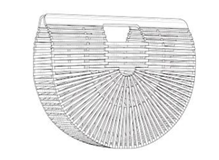On remand from the Supreme Court of the United States, the US Court of Appeals for the Ninth Circuit reaffirmed its own 2019 opinion that preliminarily enjoined a professional networking platform from denying a data analytics company access to publicly available profiles. HiQ Labs, Inc. v. LinkedIn Corporation, Case No. 17-16783, (9th Cir., Apr. 18, 2022) (Wallace, Berzon, Berg (sitting by designation) JJ.).
Previously, the Supreme Court had granted certiorari in this case, but subsequently vacated the judgment and remanded back to the Ninth Circuit for further consideration in view of its 2021 decision in Van Buren v. United States. In Van Buren, the Supreme Court attempted to clarify the reach of the Computer Fraud and Abuse Act of 1986 (CFAA), holding that authorized computer access for arguably improper purposes likely does not constitute a violation of the CFAA. On remand, the Ninth Circuit concluded that Van Buren reinforced its determination that hiQ had raised “serious questions” about whether LinkedIn may invoke the CFAA to preempt hiQ’s claim of tortious interference.
HiQ is a data company that sells “people analytics” focused on predictive employee data. HiQ’s data is largely obtained by scraping public LinkedIn profiles with automated bots. In 2017, LinkedIn sent a demand letter to hiQ asserting that hiQ’s scraping activity was in violation of the CFAA, the Digital Millennium Copyright Act (DMCA), the California penal code and common law. HiQ immediately filed suit seeking injunctive relief and a declaratory judgment that LinkedIn could not lawfully invoke the asserted claims. Granting hiQ’s motion for the preliminary injunction, the district court ordered LinkedIn to remove, and to refrain from implementing, any technical barriers to hiQ’s access to the LinkedIn public profiles.
The Ninth Circuit stated that a plaintiff seeking a preliminary injunction must establish the following:
- It is likely to succeed on the merits.
- It is likely to suffer irreparable harm absent the injunction.
- The balance of equities tips in its favor.
- The injunction is in the public interest.
This analysis required the Ninth Circuit to focus only on whether hiQ had raised serious questions on the merits of the factual and legal issues presented. The Ninth Circuit’s re-examination of these factors was nearly identical to its 2019 holding.
Starting with irreparable harm, the Ninth Circuit found that the survival of hiQ’s business was threatened since it depends on being able to access public LinkedIn member profiles. The Court also agreed, once again, with the district court’s determination that the balance of the equities tipped in hiQ’s favor. The Court found that the privacy interests of individuals who have opted to maintain a public LinkedIn profile did not outweigh hiQ’s interests in continuing its business. On this factor, the Court noted that “little evidence” suggested that LinkedIn users who choose to make their profiles public actually maintain an expectation of privacy with respect to publicly posted information. The Court also noted that LinkedIn does not own its users’ data, since users retain [...]
Continue Reading
read more

 Subscribe
Subscribe



